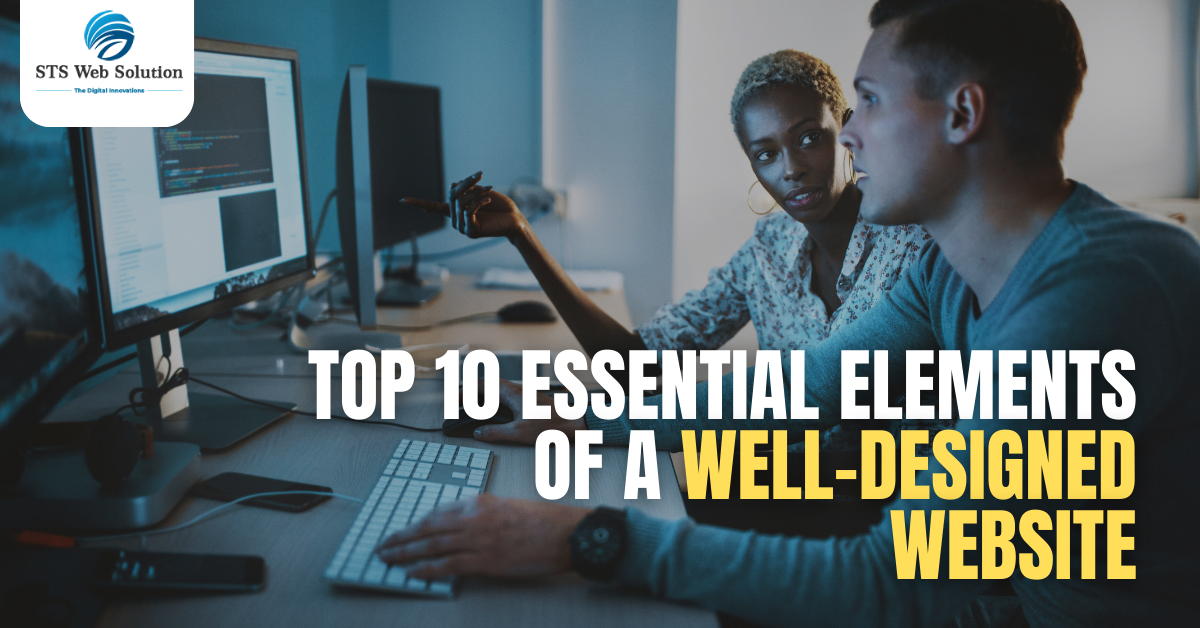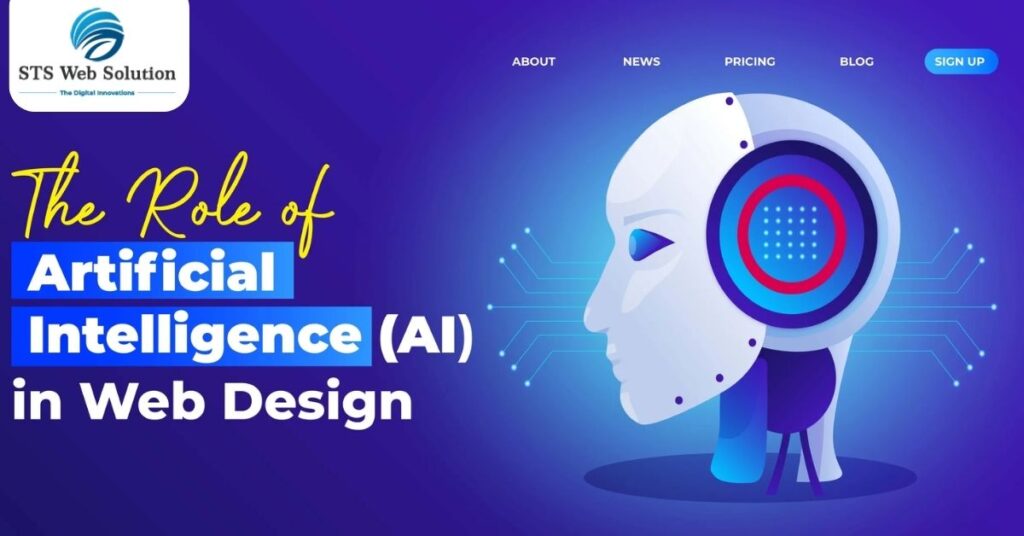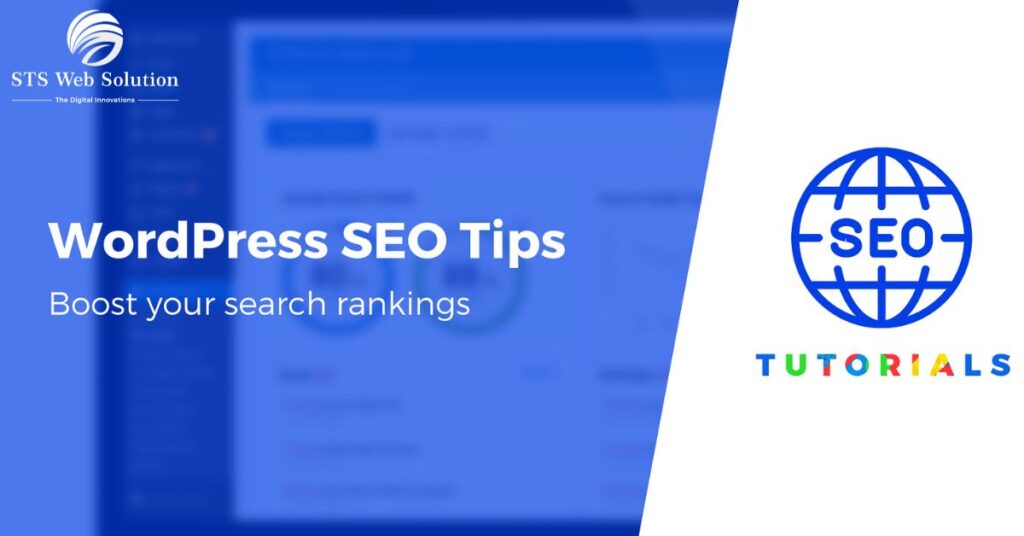In today’s digital landscape, Website Designing is crucial for businesses and individuals. It serves as the virtual storefront, representing your brand and engaging your audience. To create a successful online presence, it’s essential to recognize the key features contributing to a well-designed website. This blog will explore ten basic features to help craft a visually appealing, user-friendly, and effective website.
1. Clear And Intuitive Navigation
A well-designed website should prioritize straightforward and intuitive navigation to ensure visitors can easily find what they want. This involves organizing the website’s content logically and implementing a user-friendly menu structure. Use descriptive labels for navigation items, such as “Home,” “About Us,” “Services,” and “Contact,” to guide users to relevant sections. Consider incorporating a search bar for added convenience. By streamlining navigation, users will have a positive experience, stay engaged on your site, and find the information they need without frustration.
2. Responsive Design
In today’s mobile-centric world, responsive design is vital for a well-designed website. Responsive design ensures that your website adapts seamlessly to different screen sizes & devices, providing a consistent and optimized user experience. This involves using fluid grids, flexible images, and CSS media queries to automatically adjust the layout and content based on the device’s screen resolution. By embracing responsive design, your website will look and function beautifully on desktops, laptops, tablets, and smartphones, allowing users to access your content whenever and wherever they prefer.
3. Compelling Visual Design
Visual design is an integral part of creating a well-designed website. It encompasses color scheme, typography, imagery, and overall aesthetics. Choose colors that aligns with your brand identity and create a visually pleasing contrast. Select fonts that are easy to read and reflect the tone of your content. Incorporate high-quality images and videos relevant to your message and resonate with your target audience. Additionally, leverage whitespace strategically to create a clean, organized layout that enhances readability and visual appeal. Investing in compelling graphic design can capture visitors’ attention, convey professionalism, and make a memorable impression.
4. Consistent Branding
Consistency in branding is crucial for establishing a strong online presence. A well-designed website reflects your brand identity and ensures visitors recognize your brand across various touchpoints. Maintain consistency in the color palette, typography, and imagery to reinforce brand recognition. Incorporate your logo prominently and position it consistently across all pages. Additionally, align the overall visual style of your website with your offline marketing materials, such as brochures or business cards. Maintaining a cohesive and consistent brand image establishes trust, reinforces your brand identity, and creates a memorable user experience.
5. Engaging Content
Engaging content is the cornerstone of a well-designed website. It encompasses well-crafted text, captivating visuals, and multimedia elements that inform, educate, and entertain your audience. Create concise and compelling copy that communicates your message clearly and effectively. Use high-quality images, infographics, and videos to enhance your content’s visual appeal and engagement. Incorporate storytelling techniques to captivate your audience and create an emotional connection. By providing valuable and engaging content, you keep visitors on your website and establish yourself as a reliable source of information and increase the likelihood of conversions.
6. Clear Call-to-Action (CTA)
A well-designed website strategically incorporates clear and prominent calls-to-action (CTAs) throughout its pages. CTAs guide users towards actions that align with your business goals, such as signing up for a newsletter, purchasing, or contacting you. Design CTAs to stand out by using contrasting colors that draw attention. Use persuasive language encouraging action, such as “Sign Up Now” or “Get Started Today.” Place CTAs strategically where they are easily visible and relevant to the content. By incorporating clear CTAs, you make it easy for visitors to take the desired actions, ultimately boosting conversions and achieving your objectives.
7. Fast Load Times
Fast load times are crucial for website designing as they directly impact user experience and engagement. Users have increasingly high expectations regarding website performance, and slow-loading pages can lead to frustration and abandonment. Optimize your website’s performance by minimizing file sizes, leveraging browser caching, and utilizing content delivery networks (CDNs). Compress images without compromising quality, minify CSS and JavaScript files, and optimize server response times. By ensuring fast load times, you provide a smooth and enjoyable browsing experience for your users, increase page views, and reduce bounce rates.
8. Mobile-Friendly Optimization
With the rise in mobile device usage, optimizing your website for mobile is paramount. A well-designed website must function seamlessly across different screen sizes and devices. Implement responsive design techniques to ensure your site’s layout and content adapt to various screen resolutions. Optimize images and multimedia elements for mobile devices to minimize load times. Test your website to identify any usability issues and make necessary adjustments. By prioritizing mobile-friendly optimization, you enhance user experience, increase mobile traffic, and improve your website’s overall accessibility.
9. SEO-Friendly Structure
A website designing incorporates an SEO-friendly structure to improve visibility in search engine results. Implement proper heading hierarchy (H1, H2, H3, etc.) to organize content and make it more readable for users and search engines. Use descriptive URLs with relevant keywords to provide search engines with valuable information about your page. Optimize meta tags and descriptions to represent each page’s content accurately. Adhering to SEO best practices increases the possibilities of your websites being discovered by search engines, driving organic traffic and attracting potential customers.
10. User Feedback And Testing
User feedback and testing are essential for continuously improving the design & functionality of your website. Regularly gather user feedback through surveys, feedback forms, or usability testing sessions. Listen to their opinions, identify pain points, and address usability issues. Conduct usability testing to observe how users interact with your website & identify areas for improvement. By actively seeking and implementing user feedback, you can create a user-centric website that meets the needs and expectations of your target audience.
Conclusion
Designing a well-crafted website is paramount in today’s digital landscape, and STS Web Solutions understands the importance of incorporating the ten essential elements. With a clear and intuitive navigation system, responsive design, compelling visual aesthetics, consistent branding, engaging content, clear call-to-action, fast load times, mobile-friendly optimization, SEO-friendly structure, and user feedback integration, STS Web Solutions ensures the creation of unique websites. By leveraging their expertise, businesses can establish a strong online presence, captivate their target audience, and achieve their objectives. STS Web Solutions takes pride in delivering websites that reflect the brand identity and provide a seamless user experience, ultimately driving success for their clients.






